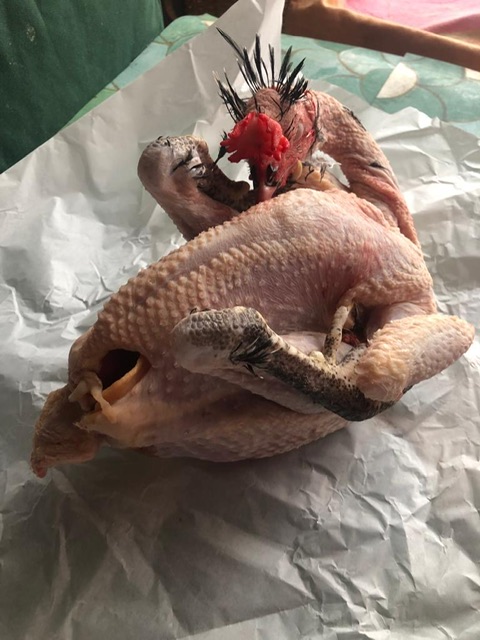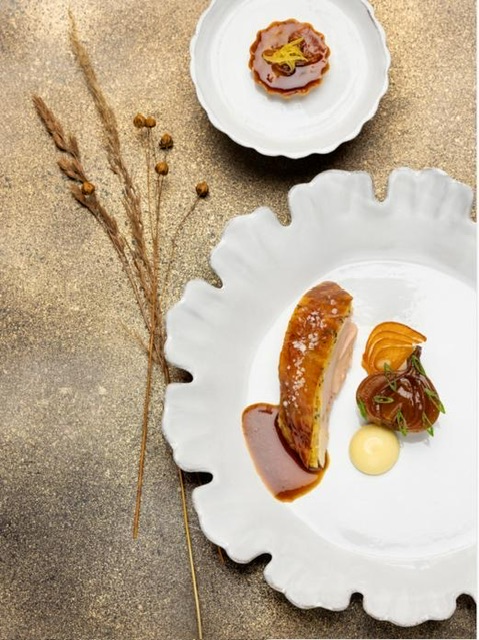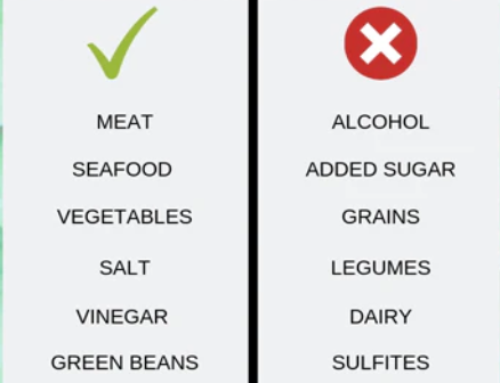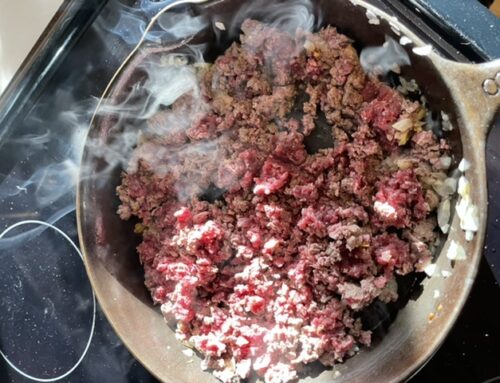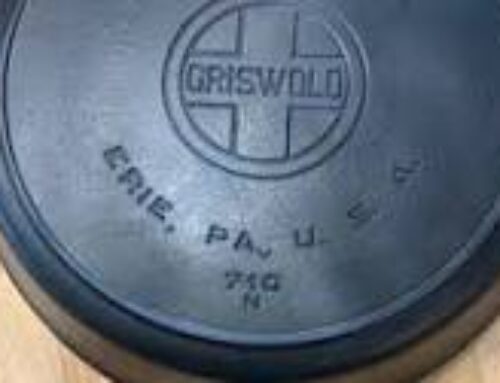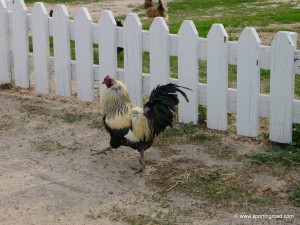 In France and most of Europe, poussin are very popular and have been regularly available since the domesticated wild red jungle fowl. Poussin is the first stage of a chicken’s life (think veal). Next is the poulet. Then, mature females or hens are poules, and the mature males are coqs. Typically, a European goes to market with a specific type of chicken in mind depending upon the recipe. For instance, cooking an old rooster in wine for a long time, coq au vin. Poule au pot, hen in the pot, requires a mature female to mature in the broth and vegetables. Here the coq’s pronounced flavor would be a bit overwhelming. In America, a capon is a reasonable substitute. A capon is gelded male fed milk until 6 months. The flesh is very white and, in France, the capon is traditionally served at Christmas. For everyday roasting or other dry cooking, get a poulet, or pullet, for a bird that will be juicy and tender. A poussin is the most tender, as they are only a month old and purely grain fed.
In France and most of Europe, poussin are very popular and have been regularly available since the domesticated wild red jungle fowl. Poussin is the first stage of a chicken’s life (think veal). Next is the poulet. Then, mature females or hens are poules, and the mature males are coqs. Typically, a European goes to market with a specific type of chicken in mind depending upon the recipe. For instance, cooking an old rooster in wine for a long time, coq au vin. Poule au pot, hen in the pot, requires a mature female to mature in the broth and vegetables. Here the coq’s pronounced flavor would be a bit overwhelming. In America, a capon is a reasonable substitute. A capon is gelded male fed milk until 6 months. The flesh is very white and, in France, the capon is traditionally served at Christmas. For everyday roasting or other dry cooking, get a poulet, or pullet, for a bird that will be juicy and tender. A poussin is the most tender, as they are only a month old and purely grain fed.
In the United States, fryers are birds of either sex up to 3 ½ pounds, then come roasters up to 5 pounds, and capons which range from 6-10 pounds. Poussin can be ordered in the US from D’Artagnans.
I encourage you to buy your chickens whole, rather than in parts (as it is generally far less expensive and you’ll be rewarded with all those sauce-building 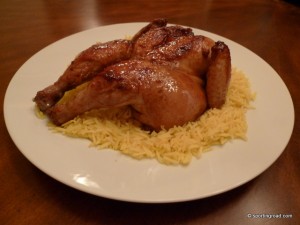 pieces such as the wing tips, back neck and giblets. It’s easy to learn how to spatchcock a chicken, all you need are kitchen shears and a sharp knife.
pieces such as the wing tips, back neck and giblets. It’s easy to learn how to spatchcock a chicken, all you need are kitchen shears and a sharp knife.
We through any extra meat such as the wing tips and back into a freezer bag which we keep for stock. We just add to the bag as parts come along. We do the same in a separate bag for the innards, which we use for pate.
At the chateau, we don’t raise birds for the table, but instead we prize our hens for their egg laying abilities. Sure, there are a few roosters too. And, they are all free range birds. We enjoy our “Easter Egg” laying hens, which lay eggs which vary in color depending on whether they are laid from Americaunas to Light Brahmas, and assorted other breeds.
In France, what may appear to be a marketing term of “extra-fresh” eggs, in in fact a real term in which the dealer keeps tract via stickers. Extra-fresh is usually up until 9 days after the eggs were laid and then the “fresh” date is 2 1/2 weeks after that day. During the extra-fresh period, the egss are meant to be eaten as soft-boiled, poached or raw, such as in steak tartare or mayonnaise.
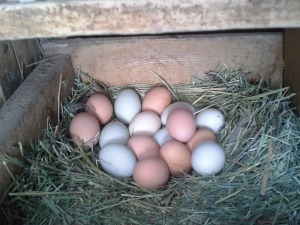
Just like skin color in humans, pigments assigned by genetics determine the color of the shell of a chicken egg. Eggs come in a variety of colors and many shades. But to generalize, chickens that evolved in South America are known to lay blue and green eggs. Chickens from the Mediterranean tend to lay white eggs. And chickens from Asia lay brown eggs.
Which takes us to your refrigerator. Once an egg from an American chicken is chilled, it needs to stay chilled. Cold eggs left out for more than a couple hours start to warm and grow bacteria. In addition, refrigeration will not kill or reduce bacteria that already exists on or in an egg. A cold temperature will, however, keep bacteria from growing or penetrating an egg. And for a kicker, refrigerating an egg doubles its shelf life to four or five weeks.
If you raise backyard chickens, assuring the cleanliness of your eggs is up to you. Be diligent in washing your hands and any items that come in contact with your eggs.
Which takes us to your stove. Through a pan or pot, heat delivers a death knell to any trace of Salmonella.

